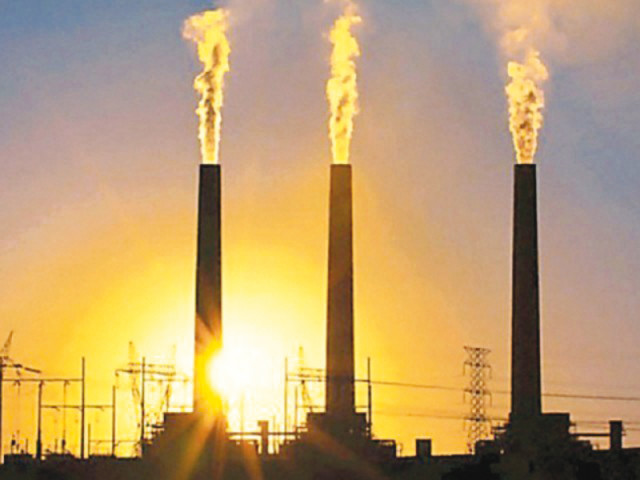View from McLeod Road: Can Hubco truly convert to a growth stock?
Investors appear to have already priced in company’s ambitious growth plans.

Hubco plans on achieving financial close on the first two coal-fired plants by the end of 2015. PHOTO: FILE
Investors in the Hub Power Company are used to viewing it as such a consistent dividend-payer that some even consider it as something akin to a fixed income security.
“Hubco is a bond, basically,” one equity portfolio manager based in Karachi once told me. Yet the new management of Hubco, led by its chairman of the board Hussain Dawood, plans on making Hubco a play on growth in Pakistan’s energy demand.

A bit of background on Hubco: it is the largest and oldest independent power producer (IPP) in Pakistan, with an installed capacity to produce 1,601 megawatts of electricity. Originally set up in 1994, it is also the only one that is geographically diversified, with its largest oil-fired thermal power plant in Hub, Balochistan, another thermal plant in Narowal, Punjab and a run-of-the-river hydroelectric power plant in Azad Kashmir.
In theory, the Kot Addu Power Company (Kapco) is of a similar size, but that poor company is majority owned by the government and so does not operate at nearly the same levels of efficiency and revenue generating capacity. For the 12 months ended September 30, 2014, Hubco had revenues of Rs170 billion while Kapco could only muster Rs119 billion during that same period.
But what has truly gotten value investors excited about Hubco is not its superior performance, but the ambition of Hussain Dawood to turn Hubco into the single largest electricity producer in Pakistan – larger even than the Wapda-owned Tarbela Dam.
In several interviews with the press, Hubco CEO Khalid Mansoor has said that his company plans on investing in six new coal-fired power plants with a capacity of 660MW each. That would represent an addition of 3,960MW, taking the company’s total to 5,561MW.
Hubco plans on achieving financial close on the first two coal-fired plants by the end of 2015, according to Muhammad Saad Ali, a research analyst at KASB Securities. The two new plants – expected to come online by 2018, with a government-mandated internal rate of return of 17% – would not only nearly double Hubco’s production capacity, but would also improve its profit margins, since the IRR allowed on its current plant is 15%.
Needless to say, investors are salivating at the prospect of a blue-chip company being converted from a defensive play to a growth stock and have bid the price up substantially. Even though its dividend payout policy has not changed substantially (the firm continues to pay out more than 90% of its earnings in dividends), Hubco now trades at an expected 2015 full-year dividend yield of 9.2%, compared to its historical average of closer to 14%.
In short, investors are no longer buying the stock for its dividend appeal, but rather for its growth prospects, which has led to a sharp run up in the stock over the past year.
Since January 2014, the stock is up an astonishing 43.5% and that does not include the 9% dividend yield on the stock. All in, investors have made nearly 54% on the stock in a little over a year, compared to a 34.6% return on the benchmark KSE-100 index as a whole during that same period.
For a large-cap stock that was historically seen as a safe, defensive bet on Pakistan’s energy sector, that is quite a ride. Unlike oil and gas stocks – which are hurt by volatility in global oil prices – Hubco actually stands to benefit from lower oil prices.
All of these changes in Hubco’s investor profile, of course, are only justifiable if the new management team is actually able to execute on its promise of expanding capacity. In Pakistan’s energy sector, with all its problems of an over-interventionist government, that is easier said than done.
Having said that, if any power company in Pakistan that can successfully begin production of coal-fired power, it is Hubco, being the only IPP to be located close to the coast, and hence not dependent on Pakistan Railways for its transportation of coal.
the writer is a staff correspondent
Published in The Express Tribune, February 23rd, 2015.
Like Business on Facebook, follow @TribuneBiz on Twitter to stay informed and join in the conversation.



















COMMENTS
Comments are moderated and generally will be posted if they are on-topic and not abusive.
For more information, please see our Comments FAQ